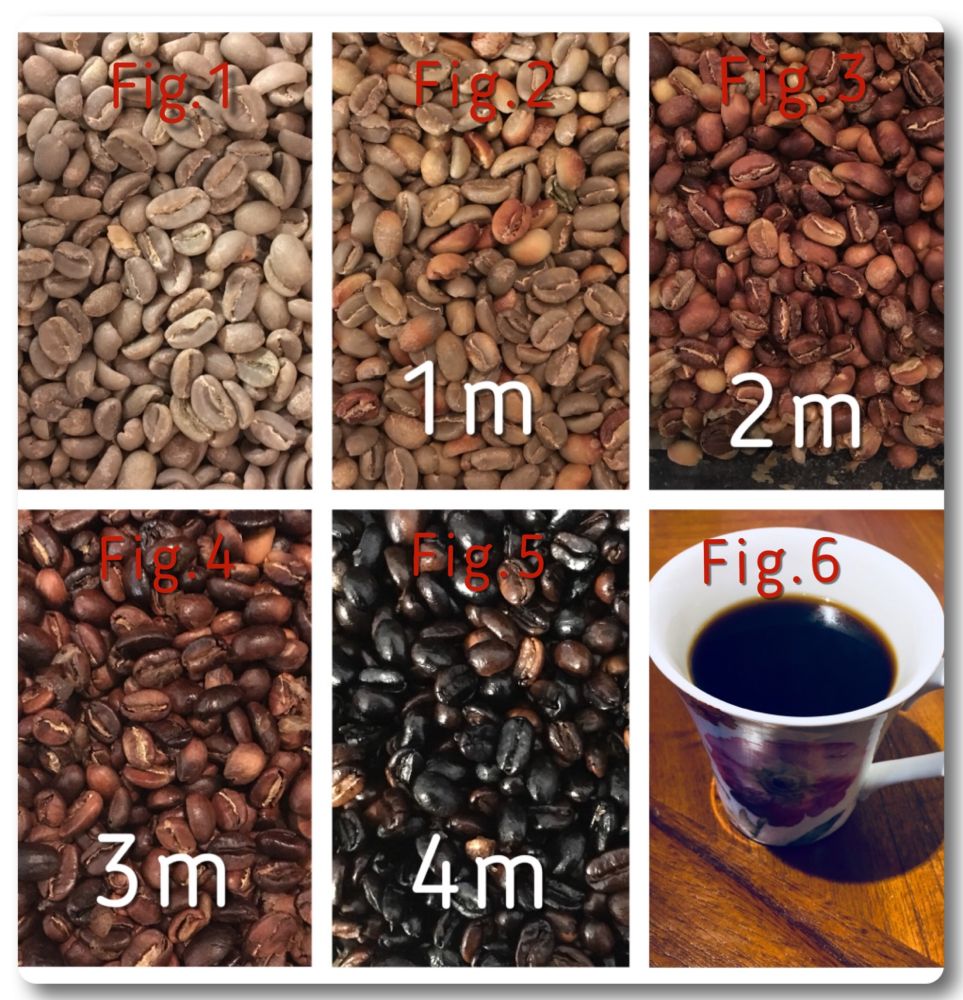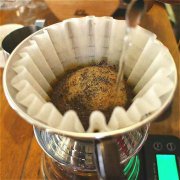Start a trip to roast coffee beans from the microwave oven how to bake coffee beans in the microwave oven?

For professional baristas, please follow the coffee workshop (Wechat official account cafe_style)
It is said that a sage sat on the edge of a cliff and told the world: "the coffee journey begins with a cup of Yega snow coffee." Yejia Coffee Bean (Yirgacheffe), a coffee with a unique style, is native to Ethiopia, Africa. It is considered to be as cost-effective as other famous coffee beans, such as Blue Mountain Coffee beans. For coffee lovers, Yega Snow Coffee is famous for covering the entire coffee flavor spectrum, ranging from light and medium roasted fragrances to deeply roasted fragrances. It's a good start.
In principle, coffee beans can be roasted with a container and heater. Although roasting coffee beans in the microwave is a bit different, it has its own uniqueness. The heating method of the microwave oven is different from the traditional method: first, the microwave oven does not set the temperature, which depends on the heating object (such as the change of water content) and the length of microwave action time; second, it can heat food quickly and thoroughly from the inside out at the same time, especially like small coffee beans. The microwave energy has been determined by its frequency and is fixed, and its heating efficiency or power is adjusted by the working time of the microwave generator (magnetron). For coffee beans, the speed of change in the heating process is controlled by the time of microwave action. According to the temperature control principle, we can use manual interval heating, such as 30 seconds or 60 seconds heating and stirring cycle alternately, to ensure that each heating is uniform and control the baking process. Under the action of microwave, the temperature of coffee beans increases and accompanied by a series of physical and chemical changes. Observe the color changes of coffee beans and listen to the crack sound to judge the process and the approximate temperature. The actual photo (the original picture taken in natural light) is used to illustrate the process of Yega coffee beans changing from "raw" to "ripe" during roasting.
Fig.1: Yega Snow Coffee beans, light green. The quantity of coffee beans depends on the size of the container. the picture shows coffee beans stacked to about three or four layers, or about 2cm thick (it is said that the average microwave penetration depth is about 5cm? ).
Fig.2: after the first 60 seconds. Coffee beans become dehydrated and change color as the temperature increases over time. In the process of dehydration, when the temperature is about 100C, the surface of coffee beans is more likely to dehydrate and begin to change color.
Fig.3: the second 60 seconds later. Coffee beans continue to break away from the little water left, become darker and begin to "explode", the so-called first explosion or first explosion, the temperature generally rises to 180C. This is the iconic sound of coffee beans maturing.
Fig.4: after the third 60 seconds. As the temperature continues to rise, the color of the coffee beans becomes darker and the volume expands, accompanied by the second explosion "crack" (to be honest, the explosion occurs one after another at this stage, who knows whether it is the first explosion or the first explosion, because of the uneven heating. Some coffee beans may only begin to explode for the first time.), it can be judged that the temperature of some coffee beans reaches 205C. At this stage, the coffee breeds a fragrance and begins to smoke, reaching moderate roasting. Then the roasting time determines the aroma of the coffee.
Fig.5: the fourth 60 seconds later. At this stage, the coffee beans move towards deep baking, and the beans begin to emit oil and smoke. Pay attention to ventilation and exhaust smoke at this time, otherwise the smoke may trigger the alarm in the house! See the bean surface oil, is the baking time, it is generally believed that it is best to stop baking before the start of oil (except for a particularly heavy taste requirements). Although stirring is carried out at each interval, the microwave oven is not guaranteed to heat evenly, which naturally results in a mixture of coffee beans with different roasting depths (such as Fig.5), making the coffee more colorful. It is usually better to cool the roasted coffee beans, clean up the thin skin of the coffee beans due to expansion, and then store them in an airtight container for 24 hours or more.
Fig.6: the beginning of the coffee tour. This attempt took only 4 minutes to heat (except for stirring). It was very fast, and although the coffee looked a little dark in the end, it was not bitter and tasted good, such as a cool breeze, fresh and elegant in taste.
According to the baking classification of the American Fine Coffee Association (Specialty Coffee Association of America-SCAA), the order from shallow to deep roasting is: (note: check the official website (SCAA.org), the baking standard is being updated)
Very Light
Light
Moderately Light
Light Medium
Medium
Moderately Dark
Dark
Very Dark
It can be seen that this classification is basically divided according to the color change process of coffee beans. If the microwave oven is heated for 30 seconds / stirred at intervals, coffee beans can roughly go through the above eight baking stages, although the color change of coffee beans may not necessarily have a strict linear relationship with the heating time, but the linear relationship should always be good first-order approximation. Heating for 30 seconds / stirring at intervals means that the process is refined, and the taste of coffee may be different, which remains to be examined. There is no doubt that microwave heating methods have great potential, because of the heating characteristics of microwave ovens (such as high speed, etc.), the "stage / discontinuous" application of microwave does not affect the evolution of coffee beans (this is more important). In addition, it is not easy to control the two key temperature values during baking, because the temperature of different coffee beans is different, and the temperature control stability of the heater is not the same. But for amateur coffee lovers, there is no need to worry about whether the temperature is accurate (which is good for the microwave oven), it is enough to observe the corresponding changes (color / sound), because any coffee bean changes the same during the baking process.
Finally, it is very pleasant to taste the fresh coffee baked by yourself, and tell friends and relatives: "this is the coffee I baked!" That feels so good!
Important Notice :
前街咖啡 FrontStreet Coffee has moved to new addredd:
FrontStreet Coffee Address: 315,Donghua East Road,GuangZhou
Tel:020 38364473
- Prev

Yega Sheffield, Gotti, Asasha, washing treatment, how to bake coffee beans
Professional barista communication please follow the coffee workshop (Wechat official account cafe_style) Yega Xuefei Goshabe Asasha G1 washing method (Ethiopia Gedeb Asasa Washed G1) production area: Gedeb raw bean treatment: washing treatment Coffee Variety: Heirloom Local original species Grade: G1 appearance: .4 dshock 300grgrere 15 + Screen Flavor
- Next

[novice answer] how much better is hand-made coffee gouache? How to calculate the gouache ratio of hand-made coffee?
The exchange of professional baristas please follow the coffee workshop (Wechat official account cafe_style). Someone asked me how much better the gouache of hand-brewed coffee is than 25 grams of gouache. When I poured out the coffee of 300c.c, the gouache ratio of hand-brewed coffee at 12:1 is the gouache-to-powder ratio of hand-brewed coffee. The same coffee, different gouache-powder ratio, the flavor is completely different. How many c c and what concentration do you want to prepare coffee powder?
Related
- Beginners will see the "Coffee pull flower" guide!
- What is the difference between ice blog purified milk and ordinary milk coffee?
- Why is the Philippines the largest producer of crops in Liberia?
- For coffee extraction, should the fine powder be retained?
- How does extracted espresso fill pressed powder? How much strength does it take to press the powder?
- How to make jasmine cold extract coffee? Is the jasmine + latte good?
- Will this little toy really make the coffee taste better? How does Lily Drip affect coffee extraction?
- Will the action of slapping the filter cup also affect coffee extraction?
- What's the difference between powder-to-water ratio and powder-to-liquid ratio?
- What is the Ethiopian local species? What does it have to do with Heirloom native species?

